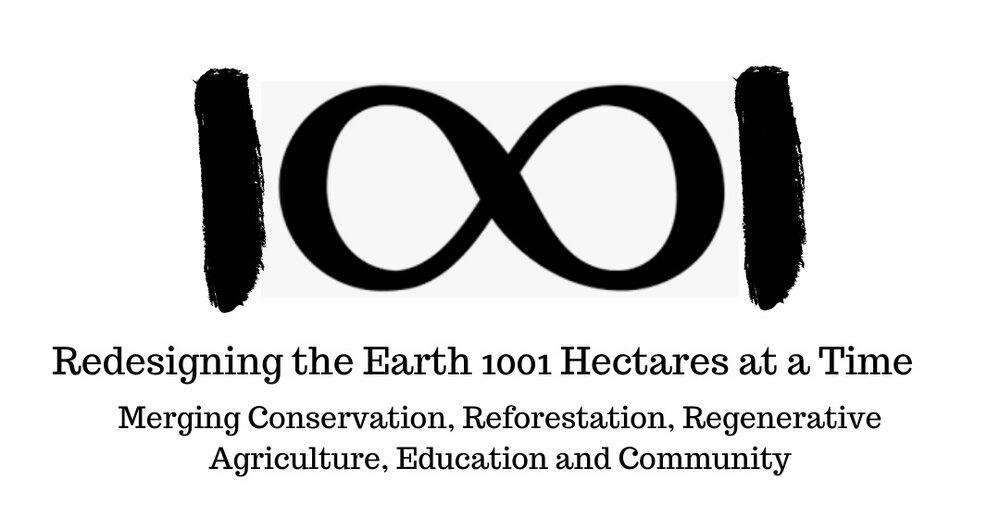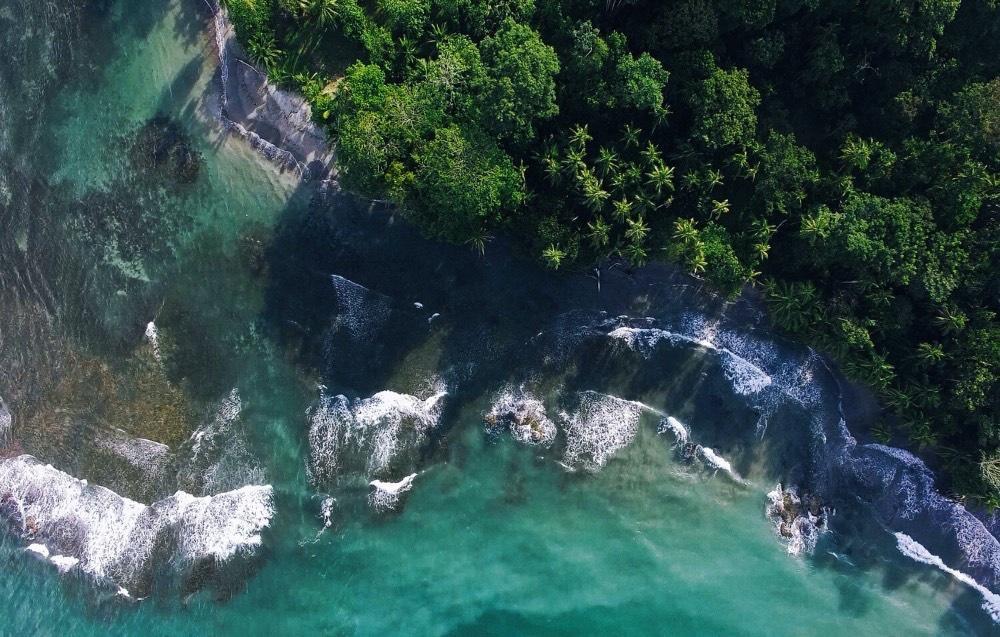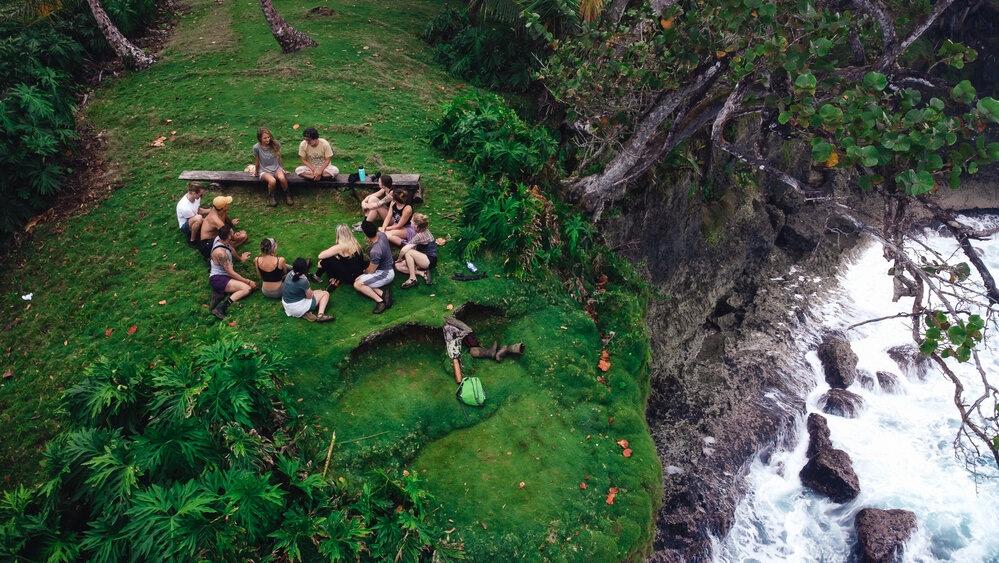Envisioning a New Future: 1001 Hectares at a Time
Jul 31, Written By Sharon Kleiman
A Project that Aims to Tackle a Global Redesign By Creating A Replicable Model of Regenerative Living
We are at a time of crossroads, what road will we take? The world as we know it is changing. We are experiencing a collective shift, challenging the pre-existing narratives and the destructive methods that have been set in place in our world. The world is ready for systemic change, a place where people can live in harmony with each other and with the Earth.
The rapid adjustments and measures in practices that seemed to be ingrained in society serve as testimony that change is, in fact, possible-- and very necessary.
So when Stephen Brooks, ethnobotanist and eco-community creator, talks about his vision for a global redesign with his new project “1001: Redesigning the Earth 1001 hectares at a time”, the idea of radically transforming the way we live, our interactions, and our systems, doesn’t sound too far-fetched or unrealistic. We’ve already done it in many ways during the pandemic, and not necessarily by choice.
It is time to shift from a narrative that puts us at odds with the world to redesign and rebuild a more harmonious future.

So where does this redesign even start? In Stephen’s vision, it starts in 1001 hectares of property in the hills of San Mateo, Costa Rica, where he has already started three ecovillages right next to each other: La Ecovilla, Tacotal, and his newest endeavor, Alegria Village.
And why 1001, you may ask? “Well I was originally saying 1000 hectares” says Brooks, “but then my friend thought it would look cool to enhance the visual by adding one at the end, and have it be symmetrical, which then formed an infinity symbol in our minds.”

Ah, of course! It had to be 1001.
Logos aside, the goal of the project is to create a model of regenerative design that can be replicated around the world. A replicable land project that takes care of the Earth, its ecosystems, and the people caring for it for many generations to come.
The initiative aims to channel resources into shifting the destructive pattern and lack of thoughtful design into a holistic approach by protecting endangered ecosystems, reforesting and creating biological corridors, planting broad acreage food forests, all merged with ecological communities and educational hubs. Brooks aims to draw from the two decades of experience with regenerative design he has worked on, and extend the values present at his projects Punta Mona, Alegria Village, Ecovilla, Envision Festival, and Ecoversity.
Yes, the project is carving its early stages, specific criteria is still being solidified: but the vision is there, and the vision is grand….
As activist Angela Davis says, “You have to act as if it were possible to radically transform the world. And you have to do it all the time.”
—————-
Punta Mona: Where it all began.

Brook’s vision begins with Punta Mona, an off-the-grid permaculture farm and educational retreat center on the Caribbean coast of Costa Rica. Launched in 1997, it is one of the most well established and bio-diverse permaculture farms in Central America, with over 300 varieties of perennial tropical fruit and nut trees, abundant root crops, vegetables and annuals, as well as over 150 medicinal plants.
The space has hosted tens of thousands of individuals from all walks of life. How does this place tie into 1001? Punta Mona serves as an embodiment of permaculture and regenerative principles— a smaller scale living, breathing proof of a successful system that serves as a stepping stone for a larger model like 1001. This intentional community on a mission to practice and teach a simpler, regenerative way of living that nourishes mind, body, spirit and Earth, and cultivates the values that 1001 will stem from.
The Alegría Village Model | Vision for the Land & Criteria

Alegría Village, Brooks’ latest addition to his work on building sustainable communities, is an intergenerational community dedicated to best practices in regenerative living and design. Nestled on 170 acres of fertile farmland in San Mateo, Alegría includes extensive permaculture food forests with thousands of fruit trees, edible community gardens, and reforestation along the creeks and property borders.
The Alegria Village model will spread throughout the land with different neighborhoods merging alternative lot buyers who buy and build homes as well as local workers who also live on the land in thriving ecological communities. “We will create fair financing for our workers so they can own their homes while sharing in the upside of the success of all of the projects with 1001! We have proved that there is a great market for these types of communities and have learned many important lessons from our experiences in La Ecovilla and Alegria.” says Brooks.
This model will include a K-12 school connected to Ecoversity (an online and offline school designed to teach values of regenerative living), an elders village, and a co-working space all merged with extensive gardens and orchards.
Brooks visioned the 1001 land project as becoming the epicenter of land regeneration practices. Including extensive nurseries to distribute the highest quality of genetics throughout the country and state of the art food processing facilities to turn the abundance of production from hundreds of hectares of food forests and rotational grazing into value added products. Giving back and co-creating with the area’s locals is an important part of the project: the nurseries and the processing facilities will support locally owned farm land to convert into productive and regenerative systems. “It is time to transfer mass amounts of financial resources from the mortgage backed banking system that is destructive in all ways to an institution that is backed by macro regenerative land projects that support all life on Earth” says Brooks.
The criteria for the land distribution is as follows
-
5%-20% existing native forest that will be conserved.
-
20%-40%% will be reforested with native forest species that are interplanted with cacao, vanilla, black pepper and other shade tolerant species. **The goal would be to have 40% (400 hectares) of the land in native forest that will never be cut.
-
10%-15% (100-150 hectares) will be planted in wood and bamboo plantings for future harvest for building materials for use in the community.
-
30% will be planted in food forests focused on diverse plantings of the most nutrient dense and important tree species on the planet.
The processing facilities will then convert all production into value added products. Cacao will turn into chocolate, African palm and coconut will turn into oil, black pepper, vanilla will be processed. Some other processes will include fruit drying, flour making, essential oils, tinctures, as well as wood and bamboo milling.
Also, stemming from Brooks’ experience with co-founding and organizing the transformational Envision Festival, a culture and arts festival designed to “celebrate human potential”, he aims to create a retreat center and conference space on site, where people from around the world can visit and experience the model. Envision hosted 10,000 people in February of 2020, yet Brooks aims to organize smaller, more frequent events of up to 1000 people for 5 days a month with the goal of providing these transformational experiences for the masses.
ECOVERSITY: A New Chapter
“The world as we have created it is a process of our thinking. It cannot be changed without changing our thinking.”

Reimagining a new world isn’t actually possible if there isn’t a shift in the way people think, and this is where Ecoversity comes in. Ecoversity is an on- and offline educational community designed to empower people and the next generation of changemakers the tools and skills they need to recreate these replicable models globally. A unique school of life, it bridges permaculture, regenerative farming, change-making and entrepreneurship with roots in community and positive psychology. With the goal of harmonizing people’s inner and outer ecology, the pillars of Ecoversity thrive in earthwork, self-work, community and action.
From Vision to Action
1001 creates the framework and a model to begin to radically redesign the way things are on a macro broad acreage holistically designed template. From reforestation to conservation and from regenerative agriculture to educational programs the project ties in the work of many years and multiple smaller-scale test runs.
The projects is the convergence point of the values that inform Brooks’ projects. He states “This time it’s bigger and on more land.” he says. “There is no time like now and we are ready to find ways to collaborate with interested groups and organizations. The world is ready for this type of massive Earth redesign and we have the team and experience to begin to execute in establishing the first one in Costa Rica while preparing to spread this replicable model globally!”

Ecoversity
Subscribe to our newsletter.
Sign up with your email address to receive news and updates.

